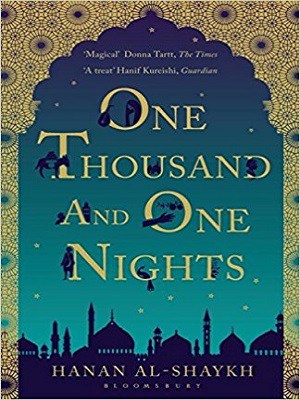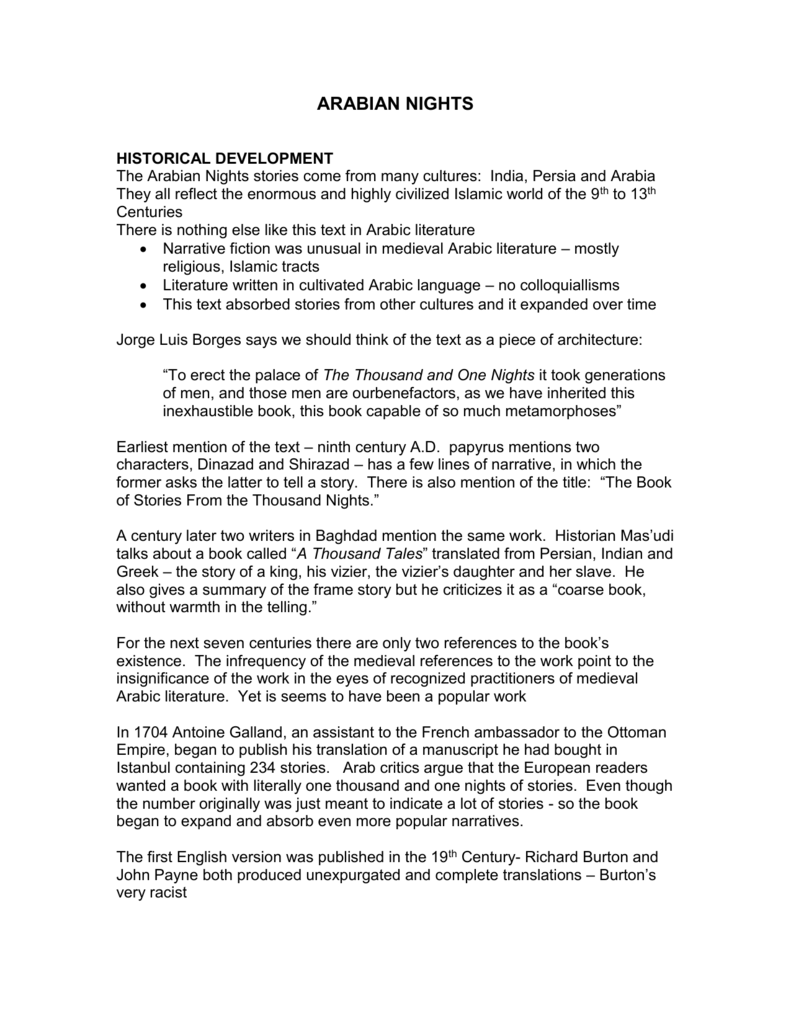

Though invisible, fate may be considered a leading character in the One Thousand and One Nights. The end of every tale in The One Thousand and One Nights consists of a ‘disappearance’ of destiny, which sinks back to the somnolence of daily life … The protagonist of the stories is in fact destiny itself. The chain of anomalies always tends to lead back to normality. By ‘beautiful’ I mean vital, absorbing and exhilarating. And the more logical, tightly knit, essential this chain is, the more beautiful the tale. “ every tale in The Thousand and One Nights begins with an ‘appearance of destiny’ which manifests itself through an anomaly, and one anomaly always generates another. The Italian filmmaker Pier Paolo Pasolini observed: Fate and destinyĪ common theme in many Arabian Nights tales is fate and destiny. An example of this is the tale of “The Three Apples” (see Crime fiction elements below). This technique dates back to the One Thousand and One Nights.

Dramatic visualizationĭramatic visualization is “the representing of an object or character with an abundance of descriptive detail, or the mimetic rendering of gestures and dialogue in such a way as to make a given scene ‘visual’ or imaginatively present to an audience”. In yet another tale Scheherazade narrates, “The Fisherman and the Jinni”, the “Tale of the Wazir and the Sage Duban” is narrated within it, and within that there are three more tales narrated. The device is also used to great effect in stories such as “The Three Apples” and “The Seven Viziers”. Within the “Sinbad the Sailor” story itself, the protagonist Sinbad the Sailor narrates the stories of his seven voyages to Sinbad the Porter. This is particularly the case for the “Sinbad the Sailor” story narrated by Scheherazade in the One Thousand and One Nights. In most of Scheherazade’s narrations there are also stories narrated, and even in some of these, there are some other stories. In the Panchatantra, stories are introduced as didactic analogies, with the frame story referring to these stories with variants of the phrase “If you’re not careful, that which happened to the louse and the flea will happen to you.” In the Nights, this didactic framework is the least common way of introducing the story, but instead a story is most commonly introduced through subtle means, particularly as an answer to questions raised in a previous tale.Īn early example of the “story within a story within a story” device is also found in the One Thousand and One Nights, where the general story is narrated by an unknown narrator, and in this narration the stories are told by Scheherazade. The Nights, however, improved on the Panchatantra in several ways, particularly in the way a story is introduced. Story within a storyĪn early example of the “story within a story” technique can be found in the One Thousand and One Nights, which can be traced back to earlier Persian and Indian storytelling traditions, most notably the Panchatantra of ancient Sanskrit literature.

The concept of the frame story dates back to ancient Sanskrit literature, and was introduced into Persian and Arabic literature through the Panchatantra. Many of Scheherazade’s tales are also frame stories, such as the Tale of Sindbad the Seaman and Sindbad the Landsman being a collection of adventures related by Sindbad the Seaman to Sindbad the Landsman. Frame storyĪn early example of the frame story, or framing device, is employed in the One Thousand and One Nights, in which the character Scheherazade narrates a set of tales (most often fairy tales) to the Sultan Shahriyar over many nights.

Some of these date back to earlier Persian, Indian and Arabic literature, while others were original to the One Thousand and One Nights. The One Thousand and One Nights and various tales within it make use of many innovative literary techniques, which the storytellers of the tales rely on for increased drama, suspense, or other emotions.


 0 kommentar(er)
0 kommentar(er)
